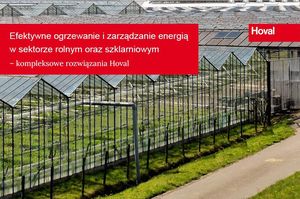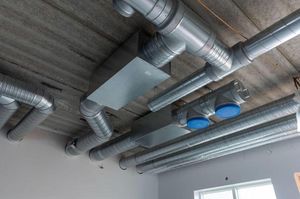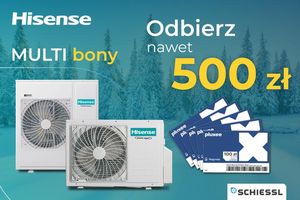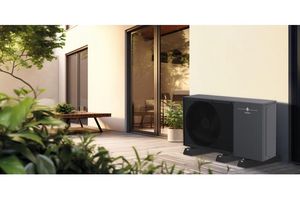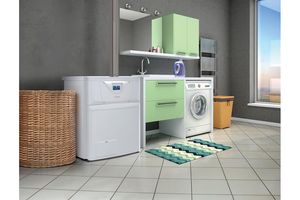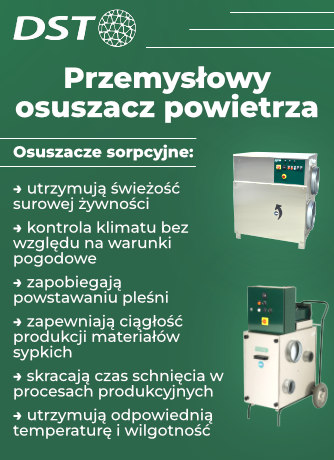Instalacje parowe - Centrum edukacyjne Spirax Sarco
Ponad setka rozdziałów omawiających tematykę instalacji parowych. Wszystko ujęte w przystępnej formie poparte przykładami obliczeniowymi. Na końcu każdego rozdziału znajduje się test sprawdzający stopień przyswojenia wiedzy.

Tytuł: Spirax Sarco Learning Centre
Autor: Spirax Sarco
Język: angielski
Format: HTML lub Adobe Acrobat Document (.pdf)
Wielkość plików: od 150 do 1200 KB
Spis treści: - 1. Introduction 1.1 Steam - The Energy Fluid 1.2 Steam and the Organisation 1.3 The Steam and Condensate Loop
- 2. Steam Engineering Principles and Heat Transfer 2.1 Engineering Units 2.2 What is Steam? 2.3 Superheated Steam 2.4 Steam Quality 2.5 Heat Transfer 2.6 Methods of Estimating Steam Consumption 2.7 Measurement of Steam Consumption 2.8 Thermal Rating 2.9 Energy Consumption of Tanks and Vats 2.10 Heating with Coils and Jackets 2.11 Heating Vats and Tanks by Steam Injection 2.12 Steam Consumption of Pipes and Air Heaters 2.13 Steam Consumption of Heat Exchangers 2.14 Steam Consumption of Plant Items 2.15 Entropy - A Basic Understanding 2.16 Entropy - Its Practical Use
- 3. The Boiler House 3.1 Introduction 3.2 Shell Boilers 3.3 Water-tube Boilers 3.4 Miscellaneous Boiler Types, Economisers and Superheaters 3.5 Boiler Ratings 3.6 Boiler Efficiency and Combustion 3.7 Boiler Fittings and Mountings 3.8 Steam Headers and Off-takes 3.9 Water Treatment, Storage and Blowdown for Steam Boilers 3.10 Water for the Boiler 3.11 The Feedtank and Feedwater Conditioning 3.12 Controlling TDS in the Boiler Water 3.13 Heat Recovery from Boiler Blowdown (TDS control only) 3.14 Bottom Blowdown 3.15 Water Levels in Steam Boilers 3.16 Methods of Detecting Water Level in Steam Boilers 3.17 Automatic Level Control Systems 3.18 Water Level Alarms 3.19 Installation of Level Controls 3.20 Testing Requirements in the Boiler House 3.21 Pressurised Deaerators 3.22 Steam Accumulators
- 4. Flowmetering 4.1 Fluids and Flow 4.2 Principles of Flowmetering 4.3 Types of Steam Flowmeter 4.4 Instrumentation 4.4 Installation
- 5. Basic Control Theory 5.1 An Introduction to Controls 5.2 Basic Control Theory 5.3 Control Loops and Dynamics 5.4 Choice and Selection of Controls 5.5 Installation and Commissioning of Controls 5.6 Computers in Control
- 6. Control Hardware: Electric/Pneumatic Actuation 6.1 Control Valves 6.2 Control Valve Capacity 6.3 Control Valve Sizing for Water Systems 6.4 Control Valve Sizing for Steam Systems 6.5 Control Valve Characteristics 6.6 Control Valve Actuators and Positioners 6.7 Controllers and Sensors
- 7. Control Hardware: Self-acting Actuation 7.1 Self-acting Temperature Controls 7.2 Typical Self-acting Temperature Control Valves and Systems 7.3 Self-acting Pressure Controls and Applications
- 8. Control Applications 8.1 Pressure Control Applications 8.2 Temperature Control for Steam Applications 8.3 Level and Flow Control Applications 8.4 Control Installations
- 9. Safety Valves 9.1 Safety Valve Sizing 9.2 Types of Safety Valve 9.3 Safety Valve Selection 9.4 Safety Valve Sizing 9.5 Safety Valve Installation 9.6 Alternative Plant Protection Devices and Terminology
- 10. Steam Distribution 10.1 Introduction to Steam Distribution 10.2 Pipes and Pipe Sizing 10.3 Steam Mains and Drainage 10.4 Pipe Expansion and Support 10.5 Air Venting, Heat Losses and a Summary of Various Pipe Related Standards
- 11. Steam Distribution 11.1 Introduction - Why Steam Traps? 11.2 Thermostatic Steam Traps 11.3 Mechanical Steam Traps 11.4 Thermodynamic Steam Traps 11.5 Considerations for Selecting Steam Traps 11.6 Selecting Steam Traps - Canteen Equipment; Oil Transfer/Storage; Hospital Equipment 11.7 Selecting Steam Traps - Industrial Dryers 11.8 Selecting Steam Traps - Laundries, Presses 11.9 Selecting Steam Traps - Process Equipment 11.10 Selecting Steam Traps - Space Heating Equipment 11.11 Selecting Steam Traps - Steam Mains; Tanks and Vats; Pressure Reducing Valves 11.12 Air Venting Theory 11.13 Air Venting Applications 11.14 Testing and Maintenance of Steam Traps 11.15 Energy Losses in Steam Traps
- 12. Pipeline Ancillaries 12.1 Isolation Valves - Linear Movement 12.2 Isolation Valves - Rotary Movement 12.3 Check Valves 12.4 Strainers 12.5 Separators 12.6 Gauges, Sight Glasses, Vacuum Breakers
- 13. Condensate Removal 13.1 Heat Exchangers and Stall 13.2 The Heat Load, Heat Exchanger and Steam Load Relationship 13.3 Oversized Heat Exchangers 13.4 Example: Selecting the Trap 13.5 The Stall Chart - Constant Flow Secondary, Varying Inlet Temperature, Constant Outlet Temperature 13.6 The Stall Chart - Varying Flow Secondary, Constant Inlet Temperature, Constant Outlet Temperature 13.7 The Stall Chart - Constant Flow Secondary, Varying Inlet Temperature, Varying Outlet Temperature 13.8 Practical Methods of Preventing Stall
- 14. Condensate Recovery 14.1 Introduction to Condensate Recovery 14.2 Layout of Condensate Return Lines 14.3 Sizing Condensate Return Lines 14.4 Pumping Condensate from Vented Receivers 14.5 Lifting Condensate and Contaminated Condensate 14.6 Flash Steam
- 15. Desuperheating 15.1 Basic Desuperheating Theory 15.2 Basic Desuperheater Types 15.3 Other Types of Desuperheater 15.4 Typical Installations
- 16. Equations 16.1 Equations
Dokumenty w postaci plików .pdf lub w postaci stron html można pobrać ze strony Spirax Sarco po kliknieciu: Learning Centre



